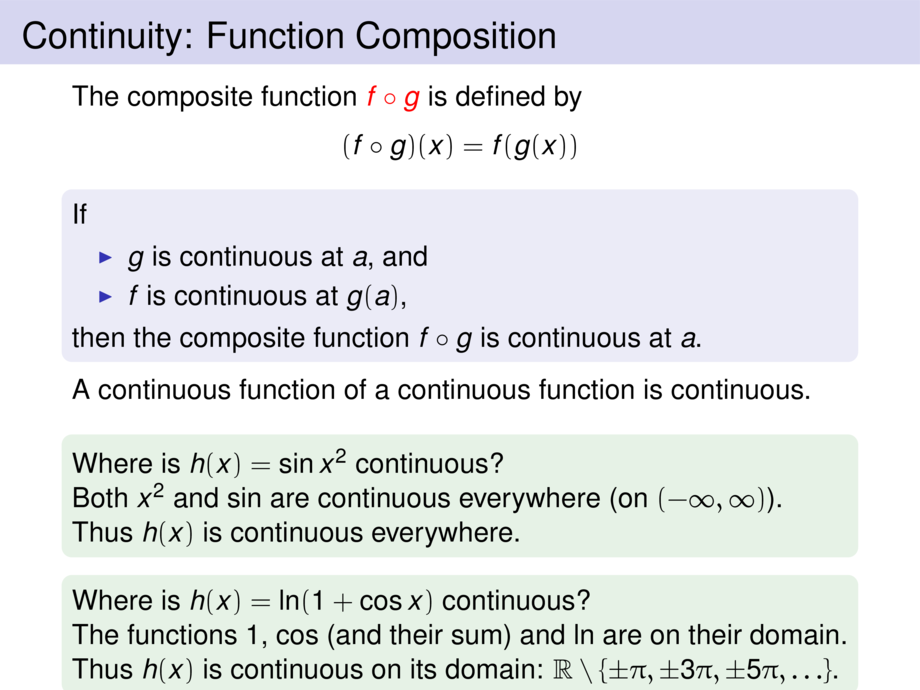



































































































73/98
\begin{frame}
\frametitle{Continuity: Function Composition}
The composite function \alert{$f \circ g$} is defined by
\begin{talign}
(f \circ g)(x) = f(g(x))
\end{talign}\vspace{-2ex}
\pause
\begin{block}{}
If
\begin{itemize}
\item $g$ is continuous at $a$, and
\item $f$ is continuous at $g(a)$,
\end{itemize}
then the composite function $f \circ g$ is continuous at $a$.
\end{block}
\pause
A continuous function of a continuous function is continuous.
\pause\bigskip
\begin{exampleblock}{}
Where is $h(x) = \sin x^2$ continuous? \\\pause
Both $x^2$ and $\sin$ are continuous everywhere (on $(-\infty,\infty)$).\\\pause
Thus $h(x)$ is continuous everywhere.
\end{exampleblock}
\pause
\begin{exampleblock}{}
Where is $h(x) = \ln (1+\cos x)$ continuous? \\\pause
The functions $1$, $\cos$ (and their sum) and $\ln$ are on their domain.\\\pause
Thus $h(x)$ is continuous on its domain: $\mathbb{R} \setminus \{\pm\pi, \pm 3\pi,\pm 5\pi,\ldots\}$.
\end{exampleblock}
\end{frame}

